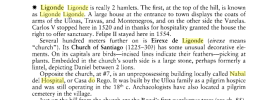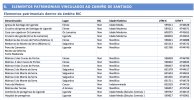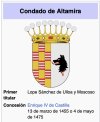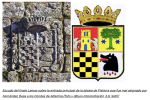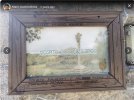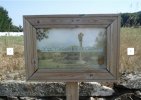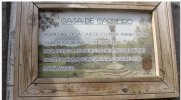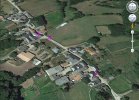I have an old guide to the Camino Francés, “The Pilgrim Route to Compostela in Search of St James”. It is an English edition (1990) based on “Le Chemin de Saint Jacques de Compostelle” (1989).
The book says that in Ligonde “Facing No 7 is a house showing the name 'Nabal del Hospital.' I have searched Ligonde and not found a house showing that name.
The book also says that in Boente “there are some noble houses belonging to the Altamira family, with the arms bearing wolf-heads, and an old bridge.” I have searched that village and not found noble houses, arms or an old bridge.
I cannot believe that the authors (Abbe G Bernes, Georges Veron, and L Laborde Balen) made up these facts, but I have not been able to find any trace of them on the internet, either. Do you have any ideas as to where these items may be found?
The book says that in Ligonde “Facing No 7 is a house showing the name 'Nabal del Hospital.' I have searched Ligonde and not found a house showing that name.
The book also says that in Boente “there are some noble houses belonging to the Altamira family, with the arms bearing wolf-heads, and an old bridge.” I have searched that village and not found noble houses, arms or an old bridge.
I cannot believe that the authors (Abbe G Bernes, Georges Veron, and L Laborde Balen) made up these facts, but I have not been able to find any trace of them on the internet, either. Do you have any ideas as to where these items may be found?




